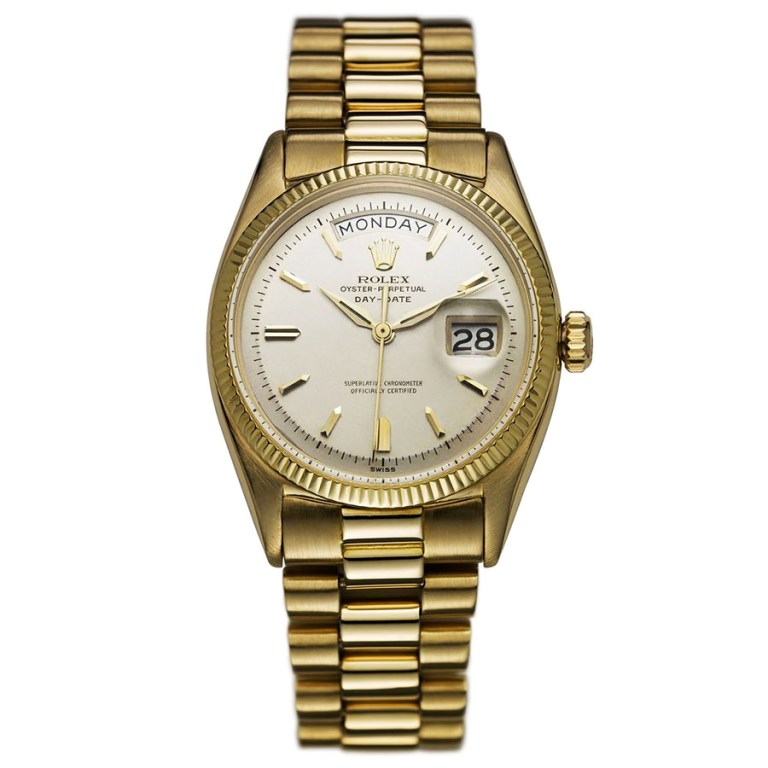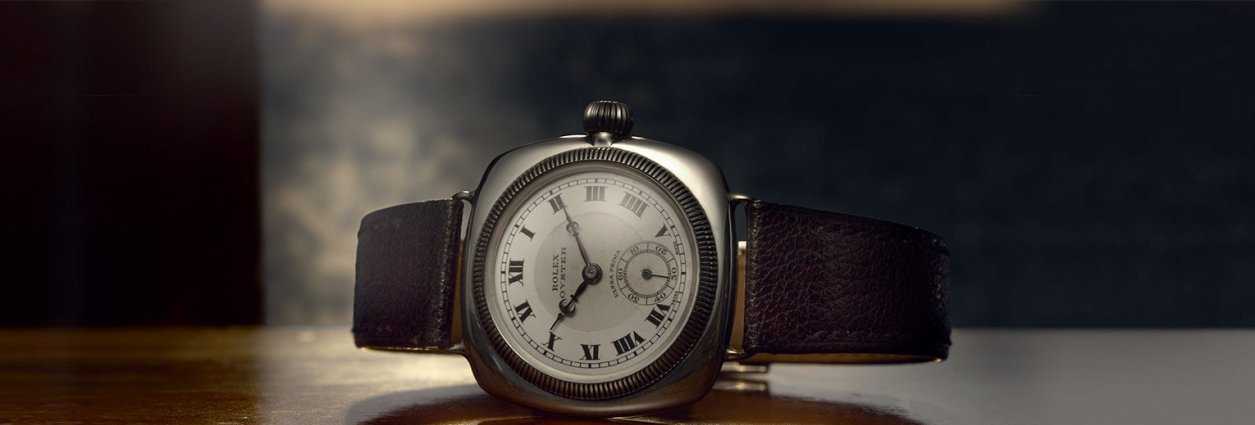Rolex: The relentless pioneer
By egor Thursday, 24 August 2017 10:51 AM

Rolex is one exceptional and lucky watchmaker. Its robust Oyster Perpetual has scaled the heights of Everest while its Deep Sea Special plunged the depths of Marianna Trench, the deepest part of the world’s oceans. Its watches have accompanied the fastest automobile driver’s wrist and its Milagauss watch is certified by the European Organization for Nuclear Research (CERN) to resist magnetic fields of up to 1,000 gauss, while it’s Oyster Perpetual Explorer II is the talisman for polar explorers. What’s the secret to this watchmaker’s success that has kept it ticking to perfection over a century? Aviamost explores
The history of Rolex is inextricably linked to the visionary spirit of Hans Wilsdorf, its founder. Born in Switzerland, on 22 March 1888 he started working with a watch exporting company Messrs. By 1903 he settled in London working for another watchmaking firm. Gaining in confidence and with financial help from his brother in law Alfred Davis, he set up ‘Wilsdorf & Davis’ specialising in the distribution of timepieces.
Though wristwatches were not seen as being masculine and it was difficult to fit all the watch mechanisms into it, besides which they were not impenetrable and dust and moisture could get into them, so pocket watches were the norm as they were also seen as being more masculine. Yet Wilsdorf not only dreamed of a watch worn on the wrist that would be both attractive and reliable, but he actively worked towards his vision and realized it.
Detail was an all important aspect in every endeavor of this great visionary. Hans Wilsdorf wanted his watches to bear a name that was short, easy to say and not only remember in any language but also not be distorted in any language, and which looked good on watch movements and dials.
Asked as to how he eventually coined the name of his company, Hans Wilsdorf related that one morning while riding a horse-driven omnibus in London, a genie whispered the word ‘Rolex’ in his ears. Everything seemed to have hinged on that lucky name for thereafter it was a swift progress every few years that witnessed Rolex catapult to superstardom in the world of horology.
Fast forwarded to succeed
The quest for chronometric precision led to success and in 1910, a Rolex was the first wristwatch in the world to receive the Swiss Certificate of Chronometric Precision, granted by the Official Watch Rating Centre in Bienne. Its history proves that the iconic brand has never rested on its laurels but continues to relentlessly pursue success to this day.
In 1919, Rolex moved to Geneva, and the following year saw Montres Rolex S.A. being registered in the city renowned for watchmaking.
Wilsdorf’s enthusiasm and ambition never sagged in his pursuit of the perfect wristwatch. And so was born the Rolex Oyster in 1926. It was the world’s first dustproof and water-proof watch boasting a hermetically sealed case providing optimum protection for the movement. The very next year, its efficacy was proven when a young English swimmer Mercedes Gleitze wore the watch and crossed the English Channel in well over ten hours.
In 1931 Rolex invented and patented the world’s first self-winding mechanism with its Perpetual rotor found today at the heart of every modern automatic watch.
In 1945 Rolex presented its fans the Oyster Perpetual Datejust the world’s first self-winding chronometer featuring the date in a window at 3 o’clock. Its case sported a fluted bezel and a Jubilee bracelet created especially for it.
The 1950’s witnessed Rolex develop professional watches for deep-sea diving, aviation, mountain climbing and scientific expedition elevating its status as the watch for achievers. In 1953 Sir John Hunt’s expedition in which Sir Edmund Hillary and Tenzing Norgay reached the summit of Mount Everest wore Oyster Perpetuals.
Interestingly the same year, the iconic watch brand launched the Submariner, the first divers’ watch waterproof to a depth of 100 meters. It featured a rotatable bezel that allows divers to read their immersion time.
The 1950’s marked the dawn of the jet age and airliners began to fly across several successive time zones. So it was important to know the time in several places simultaneously and as expected, Rolex was up for it, presenting the GMT-Master. Developed to meet the needs of airline pilots, it featured the two-tone bezel which marked daytime from nighttime hours.
The very next year, the watch of influential people, the Oyster Perpetual Day-Date debuted. Crafted only in 18k gold or platinum, it was the first wristwatch to display the date and day of the week spelt out in full in a window and sported the President bracelet.
Women finally could wear the first ladies version of the Rolex date chronometer, the lady-Datejust in 1957 which became a much coveted one.
The ultimate tool for endurance racing drivers is the Rolex Cosmograph Daytona featuring a tachymetric scale on the bezel for calculating average speed. And it was in 2013, the legendary brand entered into a long-term partnership with Formula 1® Racing as Official Timekeeper and Official Timepiece.
Oyster Perpetual Explorer II is the talisman for polar explorers, speleologists featuring a distinctive 24-hour hand as an invaluable aid around the poles and beneath the ground in tough light conditions. One among its many die-hard fans was Ian Fleming creator of James Bond.
Rolex’s Oyster Perpetual Sea Dweller, a legend among professional diver watches and waterproof today to a depth of 4,000 ft, is revisited for its 50th anniversary this year in a bolder 43mm case and driven by the new Calibre 3235 and a Cyclops lens at 3 o’ clock window.
The new Rolex 39mm Cellini Moonphase in 18k Everose gold displays the cycle of the moon on a blue enameled disc with a full moon in meteorite. It is driven by a self-winding mechanical movement entirely manufactured by Rolex, whose patented moonphase module is astronomically accurate for 122 years.
Like all Rolex timepieces, the new watches are covered by Rolex’s own Superlative Chronometer certification and an international five-year guarantee.
Every Rolex tells a story
A Rolex is seen as an accomplishment of one’s dreams. Upon the success of his first album, four-time Grammy winner Michael Buble’s record label offered him a Rolex watch, which he came to see as a measurement of his hard work and dedication to reach his dream. At the 10th anniversary of his band the singer gifted a Rolex to each member.
His words will resonate with every hardworking individual. ‘If you truly want to grasp something and become great at it, you have to put in the time’.
Roger Federer, winner of 18 Grand Slams and the player who set the record for most titles at Wimbledon is one of its finest brand ambassadors. The day he set a new Grand Slam record, it was a Rolex that accompanied his success.
Giving back to society
Giving back to society is as important for this famous brand as setting and breaking records in the realm of horology. On the 50th anniversary of the Oyster, the Rolex Awards for Enterprise were launched to honour extraordinary individuals who possess the courage and conviction to take on major challenges.
It’s Rolex Mentor and Protégé Arts Initiative founded in 2002 encourages talented individuals through a one-to-one mentoring with a major figure in their discipline. It now includes more than 80 major creative artists of diverse backgrounds.
This pioneering brand’s visionary founder’s message will resound in every heart: “Step boldly. Success demands courage and iron will” urging one to “produce nothing but beautiful work.”





























Add new comment